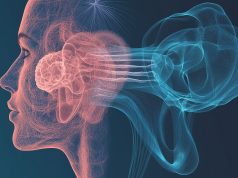In addition, significant difference seen in mean subfoveal LCV thickness values, mean subfoveal LCV thickness/mean SCT
By Elana Gotkine HealthDay Reporter
FRIDAY, Dec. 1, 2023 (HealthDay News) — Patients with Meniere disease (MD) have a thicker choroid and Haller layer on the ipsilateral side than controls, according to a study published online Nov. 2 in The Laryngoscope.
Maliheh Akbarpour, M.D., from the Guilan University of Medical Sciences in Rasht, Iran, and colleagues conducted a case-control study of 37 patients with MD and 37 healthy controls to examine and compare choroidal thickness (CT). Using enhanced-depth imaging optical coherence tomography in the eyes on the MD side, the contralateral side, and the control group, subfoveal CT (SCT), large choroidal vessel (LCV) layer thickness, and mean subfoveal LCV thickness/mean SCT ratio were measured.
The researchers found that after adjustment for age, sex, and migraine, a significant difference was observed in the mean SCT values between the ipsilateral and control groups. Furthermore, a significant difference was seen between the ipsilateral and control groups in the mean subfoveal LCV thickness values and the mean subfoveal LCV thickness/mean SCT ratio. A greater mean subfoveal LCV thickness/mean SCT ratio was seen for patients with a disease duration more than three years, which was not statistically significant.
“These findings may reflect the role of the trigeminal vascular system and neurovascular pathophysiology in MD patients that can contribute to the introduction of more effective methods to manage and treat the disease,” the authors write.
Copyright © 2023 HealthDay. All rights reserved.








